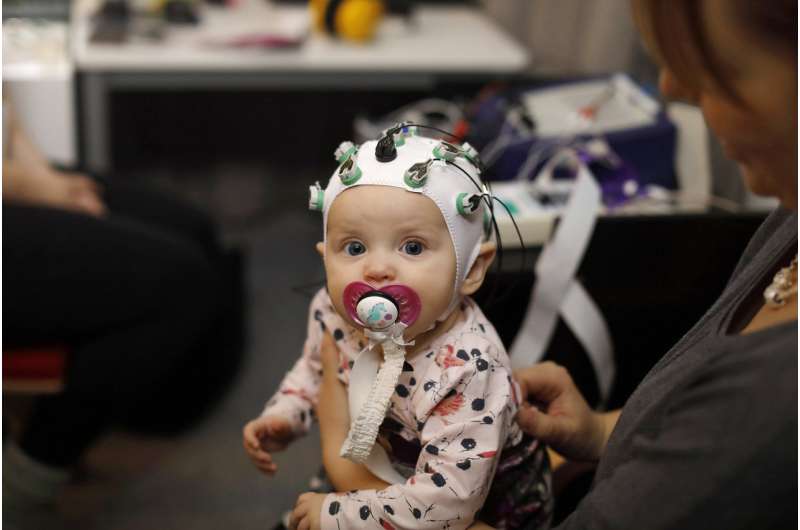Infant brain responses predict reading speed in secondary school

A study conducted at the Department of Psychology at the University of Jyväskylä, Finland and Jyväskylä Centre for Interdisciplinary Brain Research (CIBR) has found that the brain responses of infants with an inherited risk for dyslexia, a specific reading disability, predict their future reading speed in secondary school.
The longitudinal study looked at the electrical brain responses of six-month-old infants to speech and the correlation between the brain responses and their pre-literacy skills in pre-school-age, as well as their literacy in the eighth grade at 14 years of age.
The study discovered that the brain response of the infants with an inherited dyslexia risk differed from the brain responses of the control infants and predicted their reading speed in secondary school. The larger brain responses were related to a more fluent naming speed of familiar objects, better phonological skills, and faster reading.
"The predictive effect of the infant's brain response to the reading speed in secondary school is mediated by the pre-school-age naming speed of familiar objects, suggesting that if search of the words from the mental lexicon is hindered before school age, reading is still tangled in secondary school," states researcher PhD Kaisa Lohvansuu.
Atypical brain activation to speech in infants with inherited risk for dyslexia impedes the development of effective connections to the mental lexicon, and thus slows the naming and reading performances. Efficient/effortless search from the mental lexicon is therefore necessary in both fluent reading and naming.
Developmental dyslexia, a specific reading disability, is the most common of the learning disabilities. It has a strong genetic basis: children of dyslexic parents are at great risk of encountering reading and/or writing difficulties at school.
As speech stimuli, the current study used pseudo-words, i.e. words without meaning. The pseudo-words contained either a short or a long consonant (a double consonant). Phonemic length is a semantically distinguishing feature in the Finnish language, and differentiating it correctly would therefore be essential. However, the correct reading and writing of these contrasts have previously been found to be particularly difficult for Finnish dyslexics.
The research was carried out as part of the Jyväskylä Longitudinal Study of Dyslexia (JLD). Half of the children who participated in the project had an inherited risk of dyslexia.
More information: Kaisa Lohvansuu et al. Longitudinal interactions between brain and cognitive measures on reading development from 6 months to 14 years, Neuropsychologia (2017). DOI: 10.1016/j.neuropsychologia.2017.11.018



















